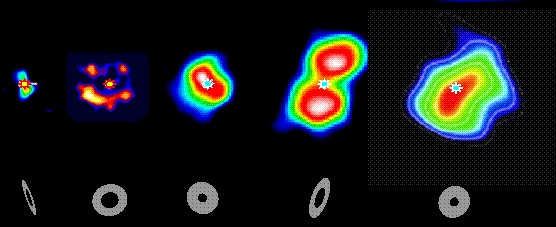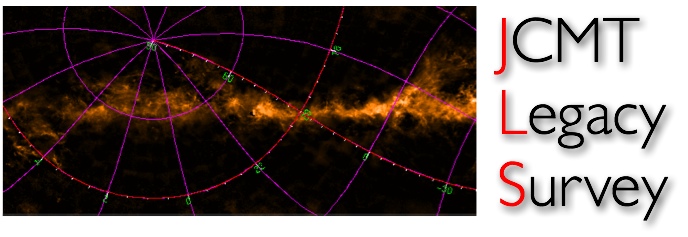Debris Disk Survey
How diverse are planetary systems? Why and where does the Solar System fit into the picture? These questions are the drivers for the Debris Disk Survey. Many main-sequence stars are surrounded by dusty “debris” which are fed by colliding asteroids and comets. The dust emission traces the regions where planet growth at least reached kilometre-sized bodies, and is thus a signpost to stars possessing planetary systems. Furthermore, cleared and/or perturbed regions seen within the disks is a unique method to uncover distant planets, from Saturn-like orbits out to beyond Neptune. This tells us much about planet formation scenarios different from the Solar System, for example leading to huge comet populations — we can even calculate whether these pose a bombardment threat to life on any inner terrestrial planets. SCUBA has left a great legacy of debris disk discoveries — a ‘rogues gallery’ of nearby systems is shown below. SCUBA-2 observations proposed here will build up the big picture, by increasing the number of disks detected and imaged in the submillimetre, targeting disks identified at other wavelengths. The submillimetre flux is negligibly affected by the stellar photosphere or background cirrus, unlike in the far-infrared, and thus we can survey any stars visible to the JCMT for which we have evidence a disk could be detectable.
There are five main goals for the survey:
- to determine unbiased statistics on the incidence of disks around nearby stars;
- to constrain disk masses and temperatures for far-IR detections (e.g., from the IRAS, ISO and Spitzer satellites);
- to measure the spectral slope of dust emission which informs studies of the grain size distribution and grain composition;
- to be the basis of source lists for future high-resolution observing campaigns using e.g., ALMA and JWST;
- to provide limits on the presence of dust that are vital to future exo-Earth detection missions like Darwin/TPF.

Debris disks seen with SCUBA, including (l-to-r) τ Ceti, ε Eridani, Vega (α Lyr), Fomalhaut (α PSa) and η Corvi. The disks are shown to the same physical scale i.e. as if all at one distance; actual distances are 3 to 18 pc. Sketches at the bottom demonstrate the disk orientations, and the star symbols are at the stellar positions. The images are at 850 µm except for η Corvi at 450 µm.
The 2-year program
The survey will use SCUBA-2 at 850 µm in band 2/3 weather to look at 500 nearby stellar systems in which the primaries are 100 each of the spectral types A, F, G, K, and M. Subgiants are included for spectral types A, F and G, while only dwarfs are included in the K and M targets. Because the survey is unbiased, young and old stars, singles and multiples, and stars with and without giant planets will be included in their natural proportions. The distance limits range from 10 pc for M stars out to ~ 40 pc for A stars. Every star will be observed down to an rms noise level of 0.7 mJy where background confusion becomes significant. The total time award is 330 hours.




